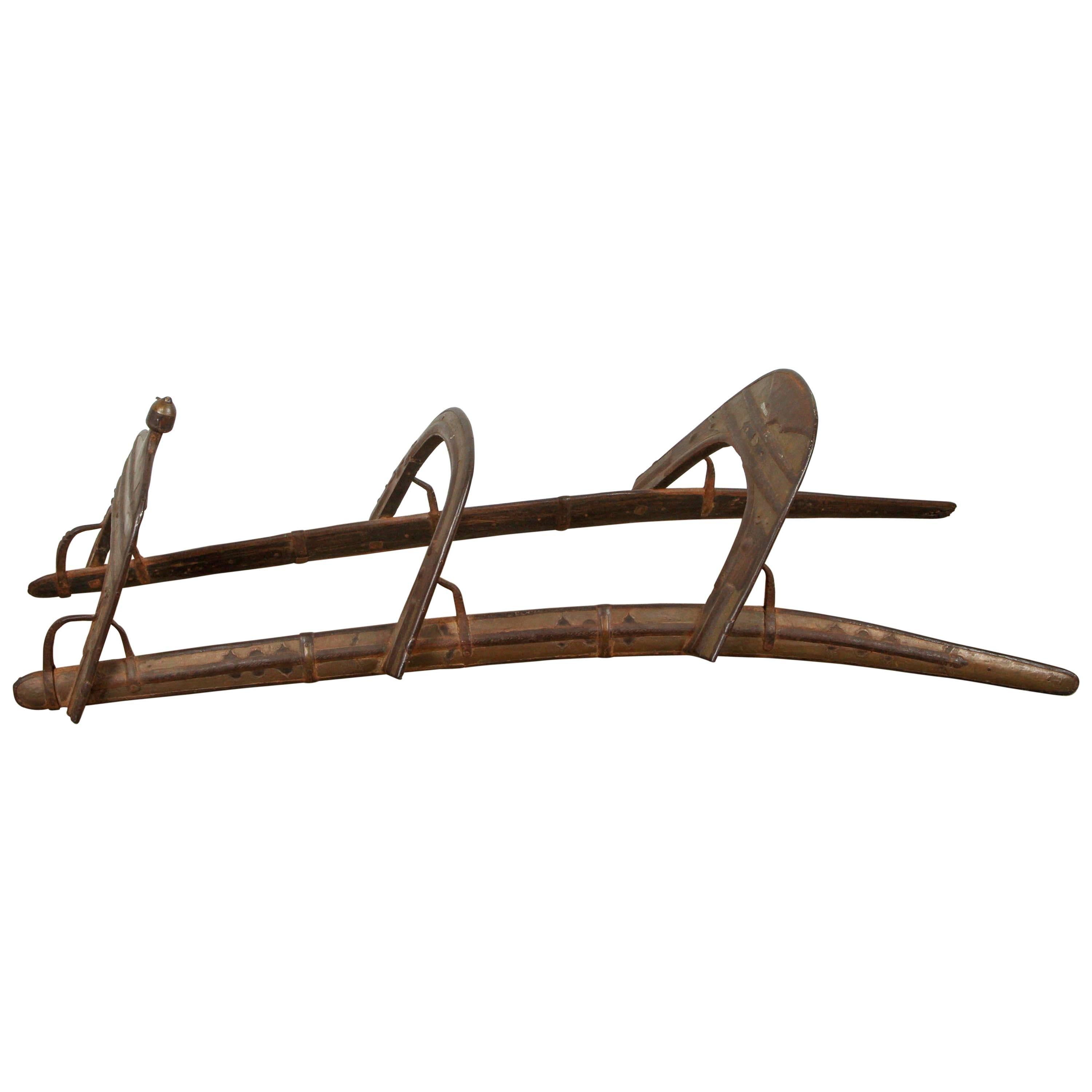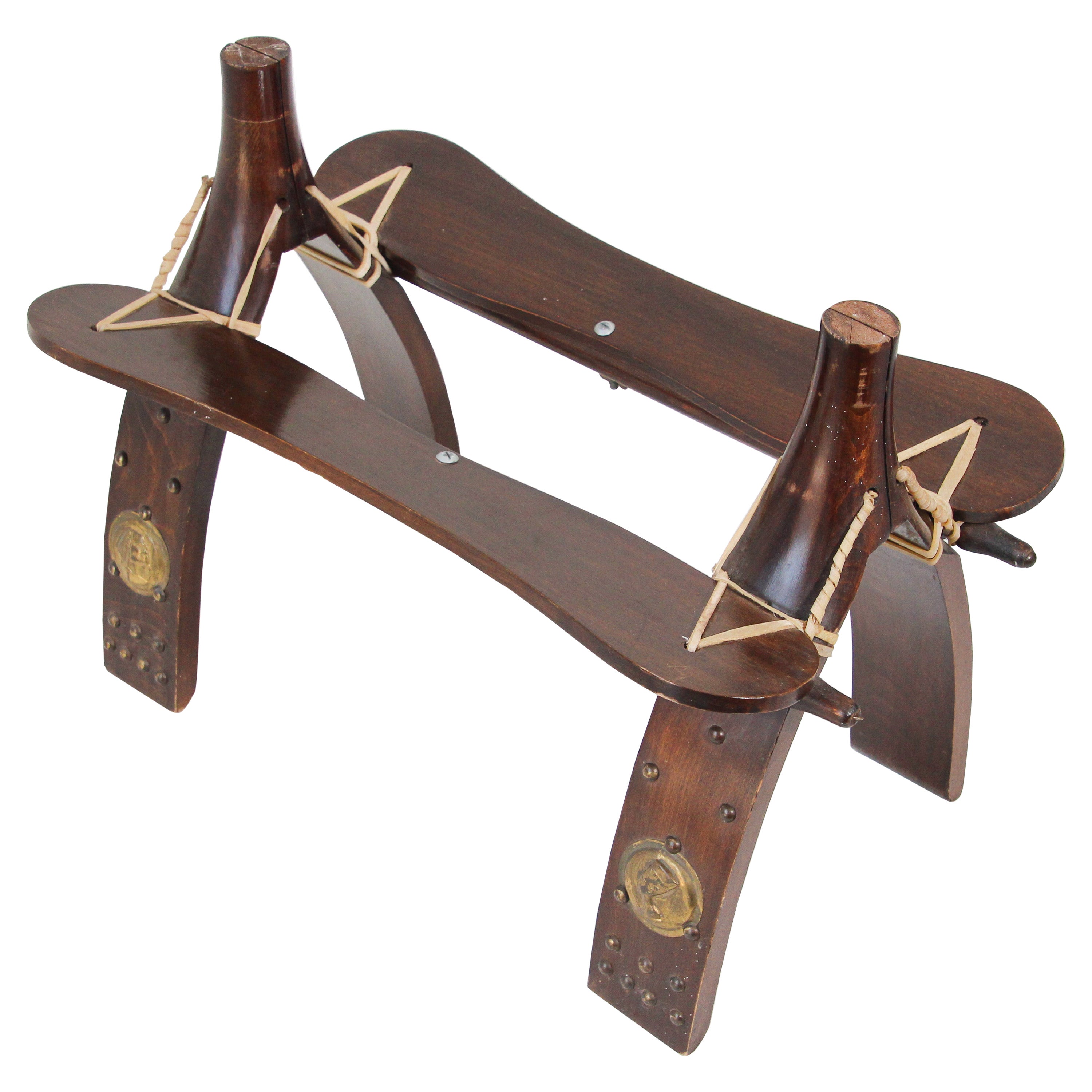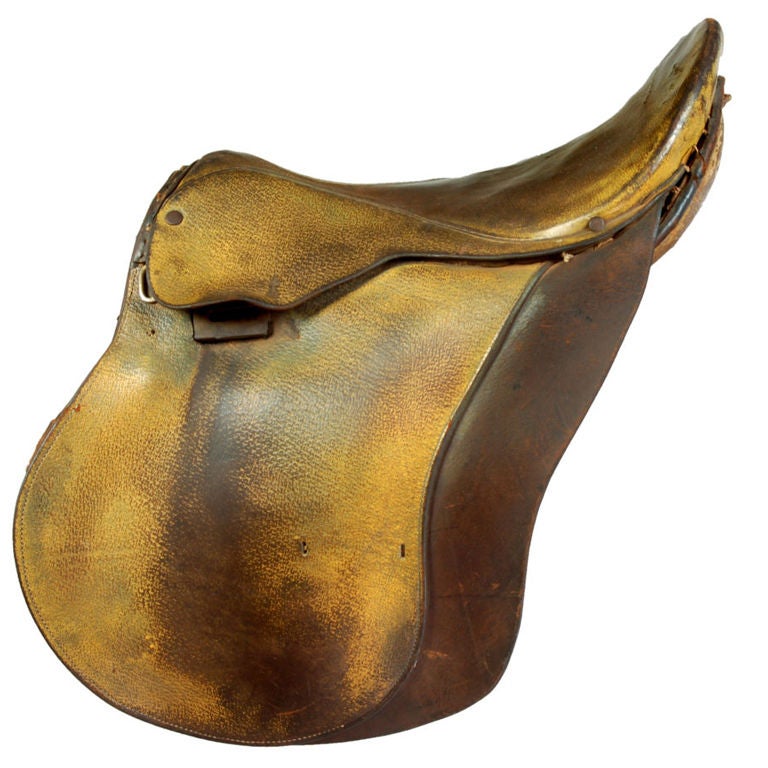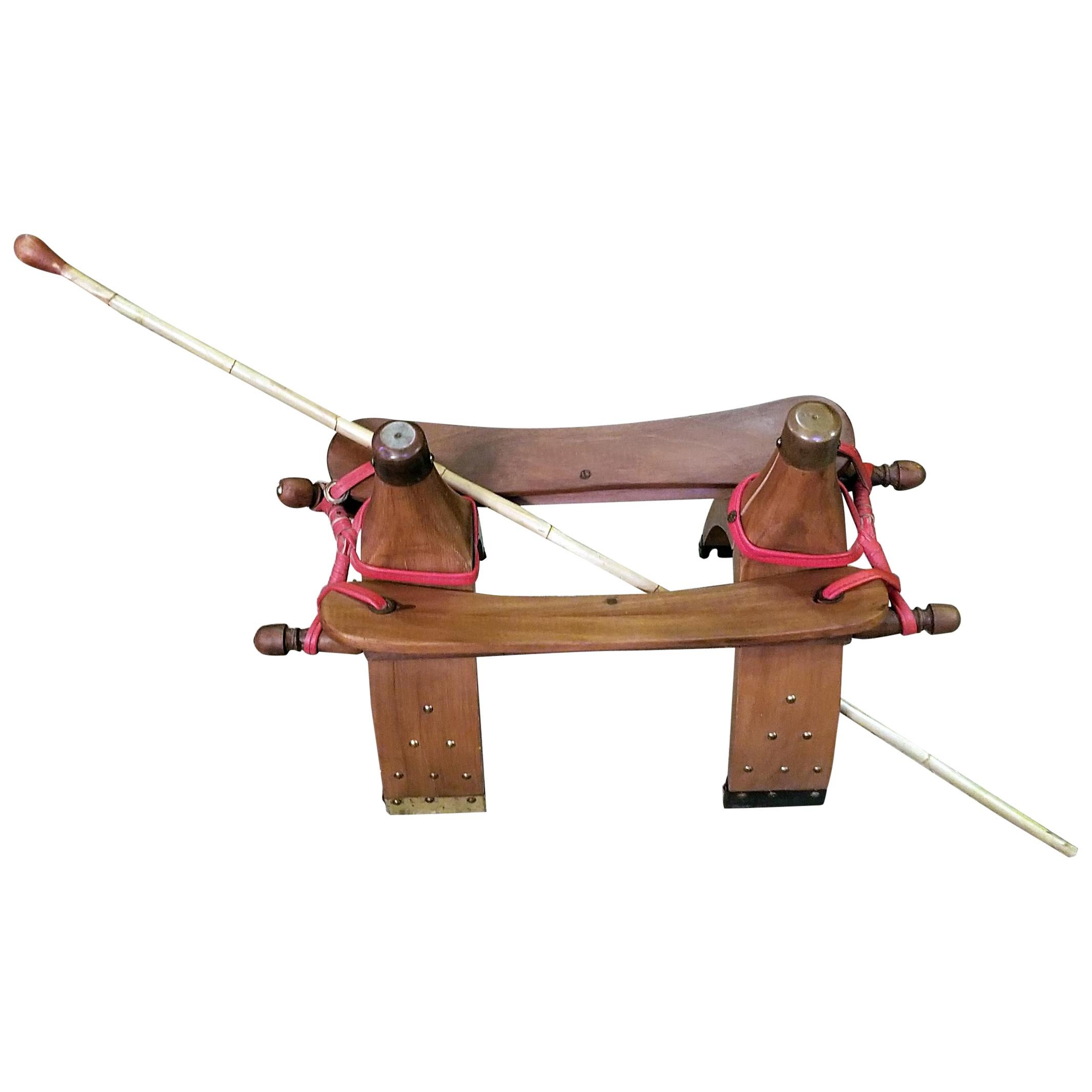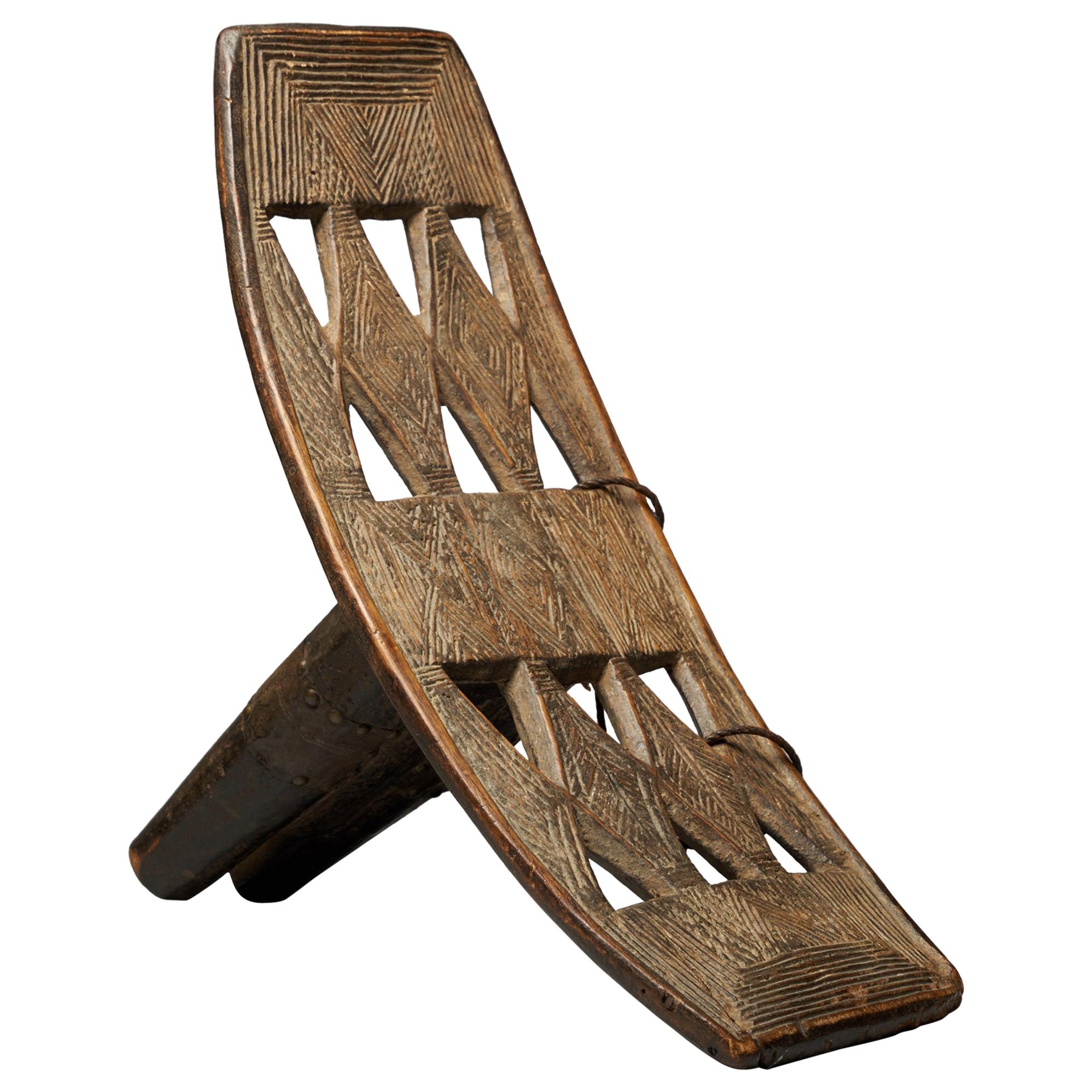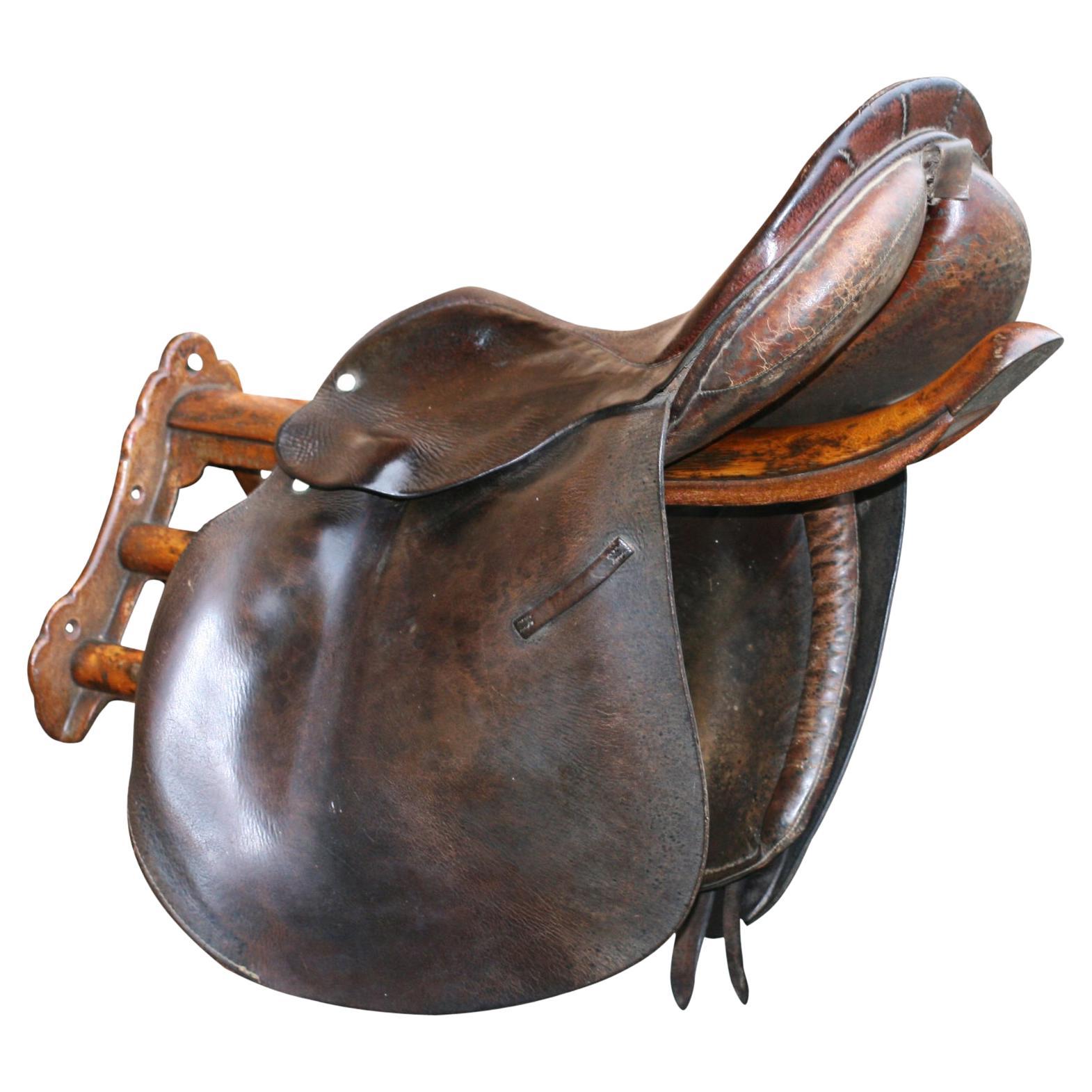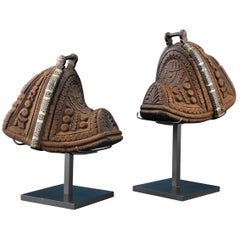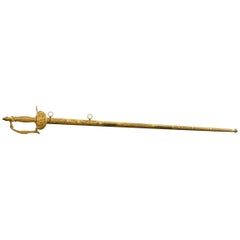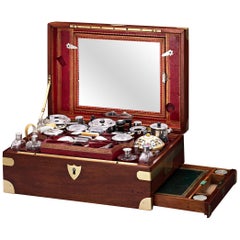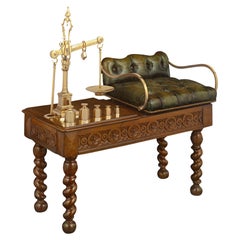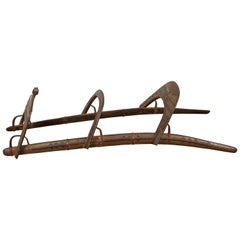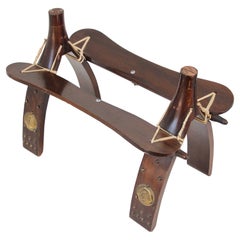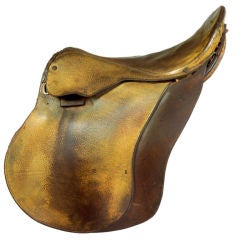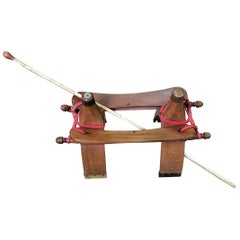Items Similar to Regiment Des Dromedaires Camel Saddle
Want more images or videos?
Request additional images or videos from the seller
1 of 6
Regiment Des Dromedaires Camel Saddle
$19,850
£14,980.25
€17,150.12
CA$27,995.08
A$30,735.11
CHF 16,034.57
MX$371,937.59
NOK 200,968.46
SEK 189,365.13
DKK 128,021.07
About the Item
This fascinating piece of military history is a camel saddle created for and used by the Dromedary Regiment (Regiment des Dromedaires) during Napoleon’s Egyptian campaigns between 1798-1801. The term “dromedary” refers to the dromedary camel, better known as the Arabian camel that features a single hump on its back. This saddle is perfectly suited to fit snuggly around the hump and secure two soldiers upon the camel’s back. The wooden saddle bears iron reinforcements and brass mountings with openwork underlain with silver. The dromedary camel proved to be a vital asset for Napoleon’s military campaign, due to the fact the animal is well adapted to life in desert, able to transport a large amounts of cargo and is highly intelligent and easily managed. Specialized equipment such as this saddle was needed to properly outfit the camels for military use. The Regiment des Dromedaires was created upon the onset of Napoleon’s arrival in Egypt in January, 1798. These soldiers were hand-selected infantrymen who actually fought dismounted,
circa 1800
Measures: 51” length.
- Dimensions:Height: 13.5 in (34.29 cm)Width: 18.5 in (46.99 cm)Depth: 51 in (129.54 cm)
- Style:Empire (In the Style Of)
- Materials and Techniques:
- Place of Origin:
- Period:
- Date of Manufacture:circa 1800
- Condition:
- Seller Location:New Orleans, LA
- Reference Number:Seller: 29-40271stDibs: LU891115691721
About the Seller
5.0
Recognized Seller
These prestigious sellers are industry leaders and represent the highest echelon for item quality and design.
Established in 1912
1stDibs seller since 2010
112 sales on 1stDibs
Typical response time: 8 hours
- ShippingRetrieving quote...Shipping from: New Orleans, LA
- Return Policy
Authenticity Guarantee
In the unlikely event there’s an issue with an item’s authenticity, contact us within 1 year for a full refund. DetailsMoney-Back Guarantee
If your item is not as described, is damaged in transit, or does not arrive, contact us within 7 days for a full refund. Details24-Hour Cancellation
You have a 24-hour grace period in which to reconsider your purchase, with no questions asked.Vetted Professional Sellers
Our world-class sellers must adhere to strict standards for service and quality, maintaining the integrity of our listings.Price-Match Guarantee
If you find that a seller listed the same item for a lower price elsewhere, we’ll match it.Trusted Global Delivery
Our best-in-class carrier network provides specialized shipping options worldwide, including custom delivery.More From This Seller
View All19th Century Chilean Huaso Stirrups
Located in New Orleans, LA
This striking and rare pair of Chilean wooden stirrups are true gems. Also known as estribos, these stirrups are carved from a solid block of wood. Tak...
Category
Antique 19th Century Chilean Other Arms, Armor and Weapons
Materials
Silver, Steel
South American Presentation Sword
Located in New Orleans, LA
Believed to have originated from the collection of a South American diplomat, the exquisiteness of this presentation sword conveys its ownership by ...
Category
Antique 19th Century South American Other Arms, Armor and Weapons
Materials
Steel, Brass, Bronze
$48,500 / set
French Nécessaire de Voyage
Located in New Orleans, LA
This exceptional and rare French nécessaire de voyage is almost certainly the work of the highly respected Parisian manufacturer Pierre-Dominique ...
Category
Antique Early 19th Century French Empire Historical Memorabilia
Materials
Crystal, Silver
$78,500
Victorian Jockey Scale
Located in New Orleans, LA
Jockey Scale
Late 19th Century
This Victorian jockey scale is an iconic piece of horse racing history. These handsome scales were used at the tracks to determine the jockey’s weight...
Category
Antique Late 19th Century English Victorian Sports Equipment and Memorab...
Materials
Brass
$34,500
Indian Arivalmanai Culinary Cutting Tool
Located in New Orleans, LA
Originating from the Kerala region of Southern India, this 19th century arivalmanai, or culinary cutting instrument, is a traditional tool used in the preparation of vegetables throughout India. Comprising an engraved steel blade mounted upon a carved wood base, the user would place their weight on the wooden base by either sitting or kneeling, and prepare their ingredients accordingly. The craftsmanship and size of this fascinating relic denotes its usage in a Hindu temple setting, as offering food to the deities is believed to direct the mind towards spirituality.
Food plays an important role in Hindu worship, and because of the veneration of the cow and belief in non-violence, most followers follow a vegetarian diet. The vast majority of Hindu religious...
Category
Antique 19th Century Indian Other Butcher Blocks
Materials
Steel
Jean-Gabriel Domergue's French Academician Sword
By Odette Domergue
Located in New Orleans, LA
This important and unique sword was presented to the famed French painter Jean-Gabriel Domergue to commemorate the painter's election to the illustrious Académie des Beaux-Arts in 1950. One of the highest honors bestowed on a French artist, the ceremonial induction into the French Academy has been accompanied by the presentation of a sword since the age of Napoléon. Rather than a weapon, the sword became part of the Academician's uniform, and, over time, its design came to represent the interests and aspirations of its recipient. This example was designed entirely by Domergue's wife Odette, a great sculptor in her own right, and thus it represents both a highly personal gift and an important art historical relic.
The design of the sword is simply magnificent. Odette Domergue found her inspiration in antiquity, a theme that is also seen in the neoclassical sculptures that occupy the gardens of the couple's famous home, Villa Fiesole - also known as Villa Domergue - in Cannes. The impressive weapon boasts a solid gold handle that takes the form of a sinuous caryatid, who is nude save for a single swath of drapery. While the female figure recalls the sculpted supports prevalent in ancient Greek architecture, she also calls to mind the subjects for which Domergue was renowned - languorous, slightly risqué women with a seductive air.
Other decorative elements such as fauna, cypresses, and grotesque heads enhance the whimsy and imagination of the incredible neoclassical design. Furthermore, the scabbard that contains the finely etched blade is also an impeccable work of art. Crafted of black Moroccan leather in imitation of the snake skin, it displays intricately engraved foliage patterns with a lion's head and Domergue's coat of arms.
Though imagined by his wife, the sword was expertly chiseled by the celebrated goldsmith R. Delsinne and assembled by the atelier of the famed sculptor and medalist Raymond Delamarre...
Category
20th Century Neoclassical Arms, Armor and Weapons
Materials
Steel
You May Also Like
Wood and Brass Antique 19th Century Middle Eastern Camel Seat Saddle
Located in Moreno Valley, CA
Antique, 19th century Asian Middle Eastern collector two person wooden camel saddle with ornate brass mountings and iron reinforcements.
19th Century Midd...
Category
Antique Late 19th Century Egyptian Arts and Crafts Tribal Art
Materials
Brass, Iron
Vintage Egyptian Camel Saddle Stool
Located in Moreno Valley, CA
Vintage Egyptian, North Africa camel saddle shape stool.
Traditionally used to ride camels in the desert of Africa and the Middle East, this camel saddle...
Category
Mid-20th Century Egyptian Folk Art Ottomans and Poufs
Materials
Brass
Antique English Riding Saddle
Located in Asheville, NC
This classic English riding saddle has a rich velvety texture. Weathered by age and wear, the dark rich muted tones are set off by the sun kissed golden...
Category
20th Century English More Furniture and Collectibles
Saudi Arabian Camel Saddle with Camel Whip
Located in Dallas, TX
PRESENTING a rare Saudi Arabian Camel Saddle with it’s camel whip.
A real conversation piece from the mid-20th Century, circa 1960-1980.
Made of oli...
Category
20th Century Saudi Arabian Islamic Chairs
Materials
Brass
Decorated Wooden Backrest Sculptured in One Piece
Located in Leuven , BE
These backrests were exclusively used by Dignitaries of the Mongo people in DRC. The diamond design on the seat can also be found on the Kuba tissues called "Velours du Kasai.".
Category
Vintage 1940s Congolese Figurative Sculptures
Materials
Wood
Musgrave Type Saddle Rack & Saddle
Located in Oxfordshire, GB
Vintage Cast Iron Saddle Rack With Leather 'Camelot' Saddle.
A decorative display of a Musgrave & Co. type cast iron saddle rack with oak covers and a Batchelors of Epping 'Camelot' ...
Category
Late 20th Century English Sports Equipment and Memorabilia
Materials
Iron
